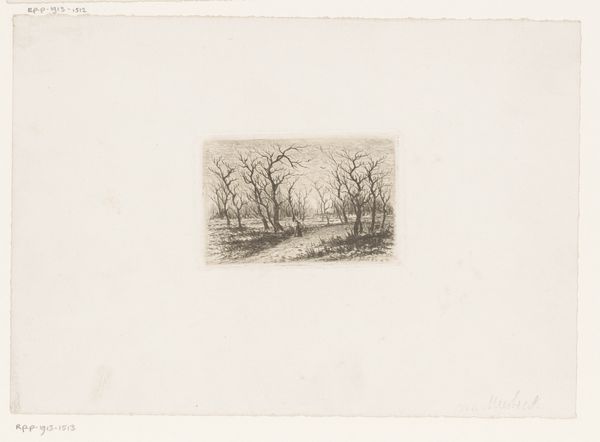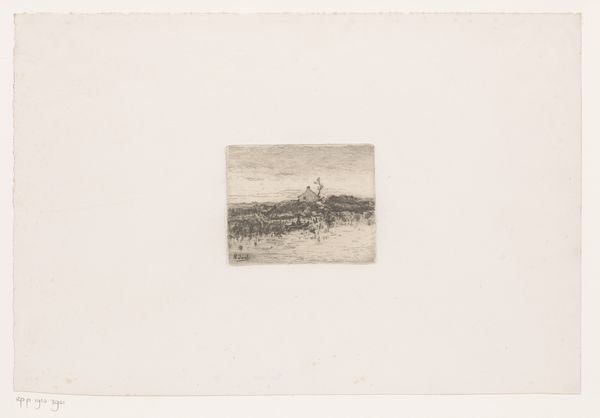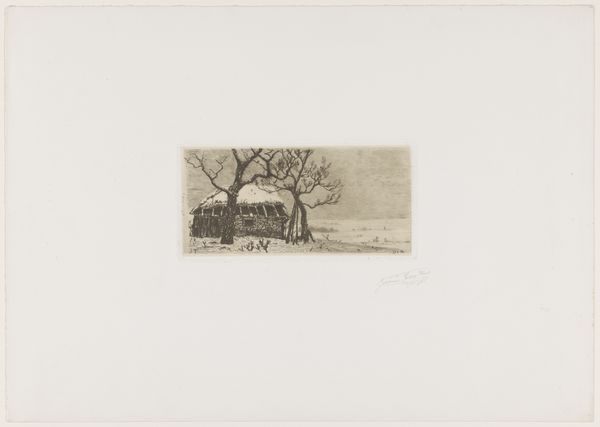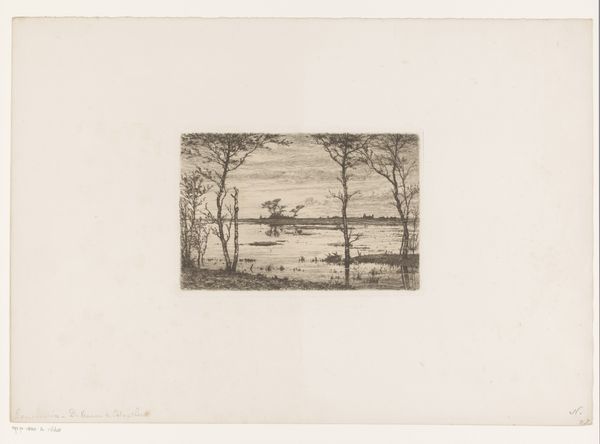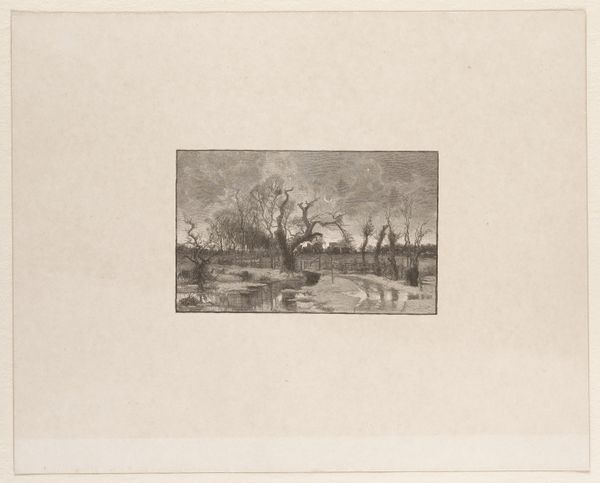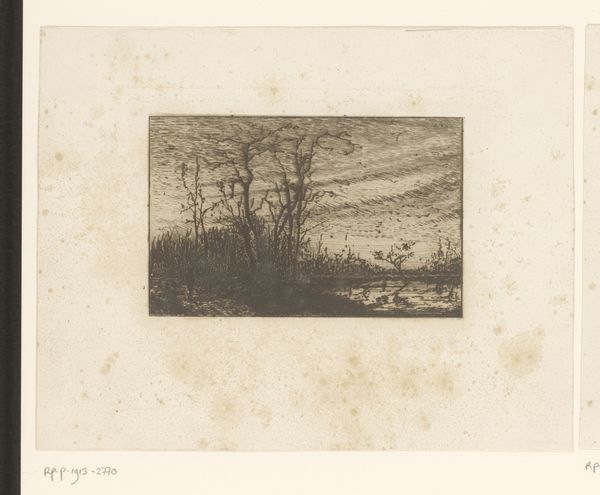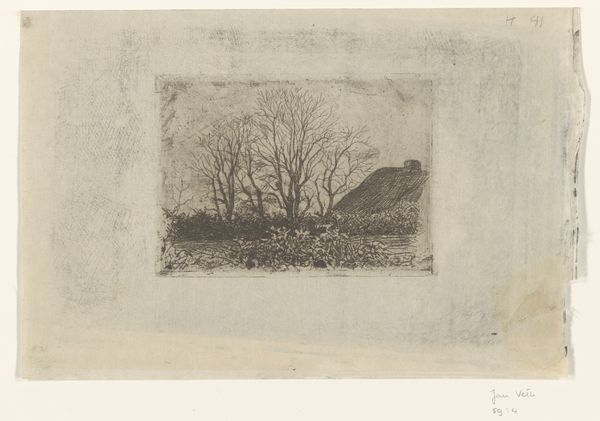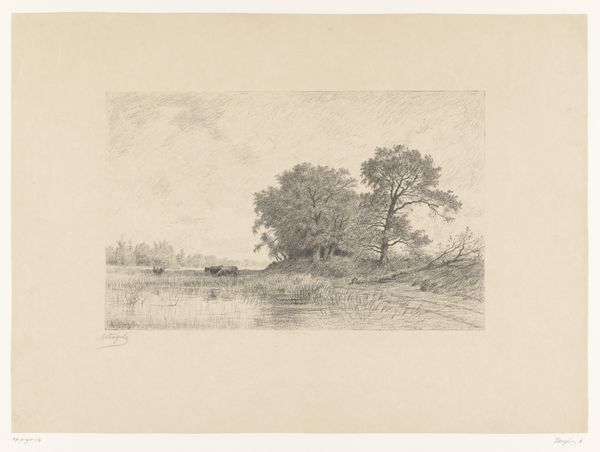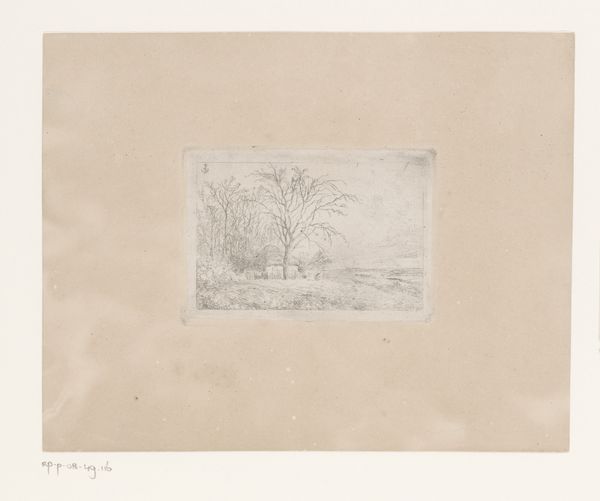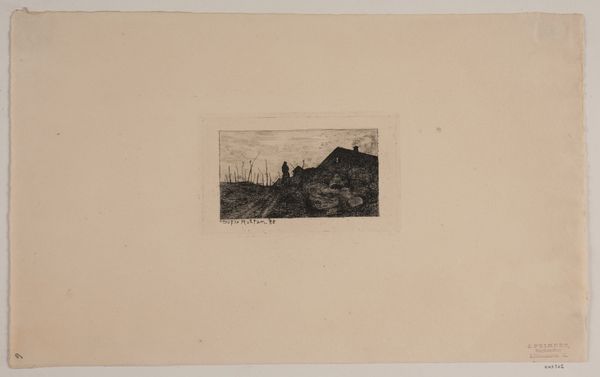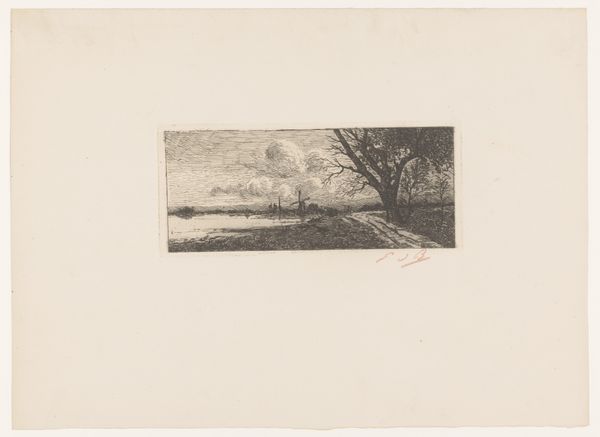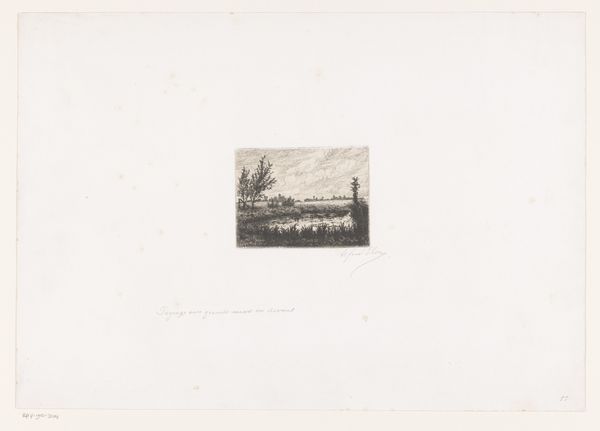
print, etching
# print
#
etching
#
landscape
#
realism
Dimensions: height 51 mm, width 101 mm
Copyright: Rijks Museum: Open Domain
Curator: Cornelis Vreedenburgh created this etching, "Vrouw bij een boot aan de waterkant," sometime between 1890 and 1946. The work currently resides here at the Rijksmuseum. Editor: It evokes such stillness, doesn't it? Almost dreamlike in its hazy quality, like a half-remembered moment by the water. Curator: Vreedenburgh often captured landscapes, particularly water scenes, and he adhered to Realism. Think of how the late 19th century increasingly depicted everyday life in unidealized ways. How do you think the medium contributes? Editor: The etching gives a sense of transience. Realism might depict everyday life, but this method also introduces a layer of personal expression, especially in its texture. The figure, likely a woman, and the boat suggest ideas about access. Who controls the waterway, who can navigate it, and at what cost? Curator: Those questions about access resonate deeply. Considering the period, etching was accessible compared to oil painting, thus appealing to social layers beyond wealthy patrons. Vreedenburgh might be mirroring an act of democratization simply through choice of media. Editor: True. It seems the artist uses an etching technique to capture something fleeting, but in its capture is both democratized in its making and access. However, is there an undercurrent of sadness? The lone figure, the subdued tones—does this quietude also express a kind of social isolation or is that a symptom of looking back and finding distance? Curator: It is important to examine it not as simple fact but, in its artifice, consider all interpretations. Its greyscale softens to make an un-place out of the Dutch landscape that is there. But isolation, while probable, could also be freedom in the period, with all kinds of opportunities coming available to marginalized individuals. Editor: That's an astute reading. It moves it beyond simply sentimental nostalgia to considering active opportunity and perhaps change. It provides nuance. Curator: By situating Vreedenburgh within evolving political and economic shifts, hopefully listeners are empowered to form richer individual impressions. Editor: Exactly, moving past a simple snapshot of history into questioning who gets to represent history.
Comments
No comments
Be the first to comment and join the conversation on the ultimate creative platform.
